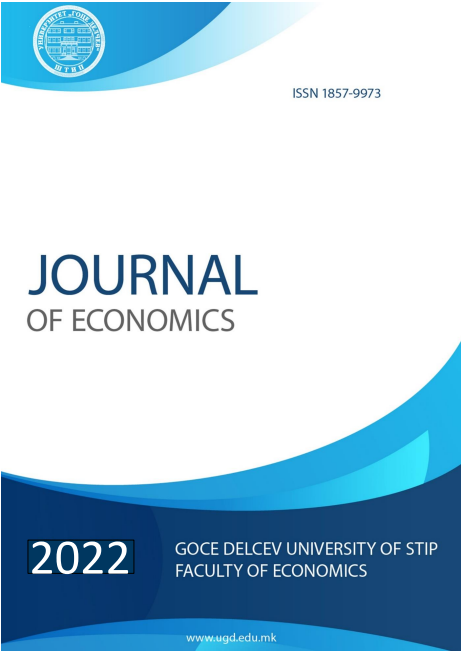Markov Switching Modelling of Shocks in the Growth Regression: The Case of North Macedonia
DOI:
https://doi.org/10.46763/JOE227.2028tnKeywords:
Economic growth, Exogenous shocks, Markov Switching modelling, North MacedoniaAbstract
The empirical analysis of economic growth usually starts with the linearity assumption, implying only linear or trended movement in output growth and its relation with the explanatory variables. This is relevant when the countries under analysis follow the “Solow” balanced growth pattern, characterized by no significant fluctuations in the macroeconomic data series in the long run and usually described as variation around a single trend, which means that the variations are negligible and do not affect the linear trend in the data. However, sometimes big exogenous shocks such as Global Financial Crisis, pandemic, wars and conflicts around the World impact growth pattern, causing big shifts in growth process in the countries. This impact is especially relevant in the case of developing or transition countries, where the big shocks cause shifts in growth pattern, named growth regimes with specific properties for each regime. The growth process observed through various growth regimes instead of singular growth path was supported by the findings of many scholars who called for specification of a nonlinear data generating process for analysing the impact of big shocks on economic growth. In this paper the main objective is to examine the deviations of real economic activity, measured by the GDP growth rate from some linear trend, by the use of Markov Switching model in the case of North Macedonia. North Macedonia is good example to test for non-linearities in growth patten due to the big shocks and adjustment happening in the course of last three decades such as structural changes of transition, conflicts, Global Financial Crisis, Covid-pandemic. The results suggest that the real economic activity changes before and after some shock or regime shift occurs, characterised with specific mean growth rate and specific volatility within the regime. Hence, the conclusion is that the possible nonlinear notion of economic growth should be taken into account when conduction growth analysis, but also when defining the economic growth programmes in the countries, especially developing ones.


